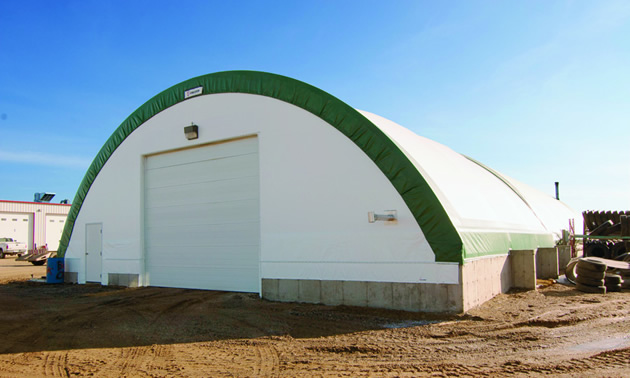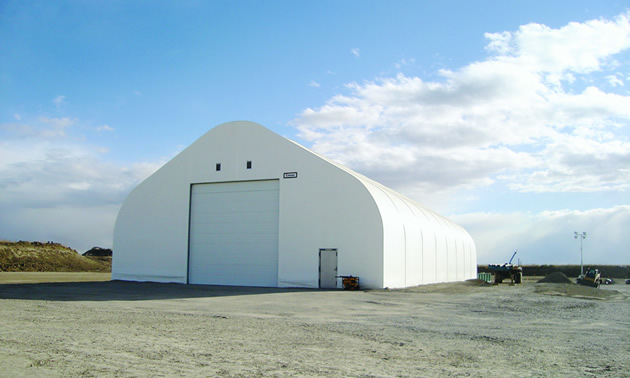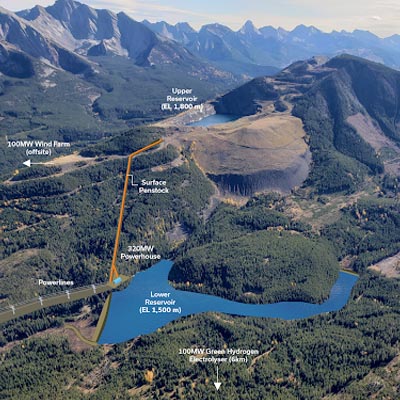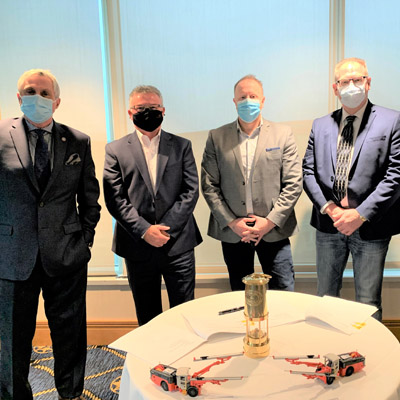Mining industry sees the benefits of fabric covered structures
Fabric covered portable buildings are reducing construction time, allowing for quick remediation of mine sites and more.
New technology in fabric covered structures is now benefiting many industries, including the mining and exploration sector. These membrane or fabric covered portable buildings are reducing construction time, allowing for quick remediation of mine sites, and are giving many companies the opportunity to discover new cost-effective ways of housing offices and working spaces.
"Many people may not understand the advantages of such buildings compared to pre-engineered steel buildings," said Ron Bryant, owner and CEO of Norseman Structures in Saskatoon. "The industry is working hard to combat biases in many areas of the country. It is an industry with political issues and sometimes fierce competition. But at the end of the day, this industry is growing and becoming incredibly vital to many industries, particularly mining."
The Membrane Structures Manufacturers Association (MSMA) is a Canadian non-profit corporation. Bryant is the president of the organization.
Overcoming challenges
Bryant said the association was formed because they felt it was important to be represented as a group to licensing bodies and to organizations like the Canadian Standards Association (CSA) and the National Building Code—because their product is slightly different than steel structures. Many regulations have been developed and applied to steel structures and MSMA felt it was very important to represent the industry with an association to get similar regulations and protocols for the fabric covered building industry.
The industry is comparatively smaller than other industries in Canada. Currently, the MSMA has fewer than 20 companies as members and it has been operating for about 10 years now. Its other purpose and goal is to act as a lobby group to insurance companies and various permit-issuing groups across the country.
"One issue we found was building permit rules regulations and applications are applied quite differently across the country," said Bryant. "We found in some jurisdictions there is actually quite a bias against these types of structures. We have found pockets where these buildings won't get a license or building permit because these bodies are operating without the knowledge of these structures. We want to help them understand."
Fabric covered structures are far from tents. There are two main categories: non-engineered or utility-type structures that are not site-specific, and engineered structures, the more important category when talking about mining. For example, Norseman Structures buildings are engineered to the identical specifications of a pre-engineered steel structure—except they are clad in fabric as opposed to steel.
"The sooner our industry gets together on an agreedupon engineering standard, the case can be made to the permitting bodies that these are legitimate structures," said Bryant. "With the price differential diminishing between steel and fabric covered structures, our industry can no longer sell these products based on price alone. Fabric covered structures can be sold on its own merits."
In some cases, fabric structures can be very close to steel structures in many applications and can cost less. In the past, the price differential before was so substantial that many customers would select fabric simply because of its much lower cost. Now the industry must do a better job of selling its structures bases on their merits, said Bryant.
"We need to differentiate between the price comparative between the structures themselves," said Bryant. "It is relatively similar, but the project cost of putting up one of our structures is where you start to get some economies, because the advantages of our structures are typically in that the foundations need to be less substantial, which then makes the construction period shorter."
Bryant said it also takes less time to construct a fabric structure when you take into account the whole project time.
"Time is money, and if you can put up a fabric structure in two to three weeks instead of eight weeks (or double the time) for a pre-engineered steel structure, that money to construct the structure is reflected in the total project cost," he said. "The total cost of fabric structures can still be significant and we can't just rely on that. When people are just comparing the price of a building, any building, that differential is less. So it's important as an industry to talk about project costs."
The advantages
The length of time for installation of these fabric covered structures is incredibly important, particularly in the mining industry. The mining industry, according to Bryant, can have very short construction periods or seasons, given the fact they have to move components into very remote areas in winter or on ice roads. They have a very condensed manufacturing period, so a fabric covered structure has a huge advantage, as it can help mitigate against seasonality and a short construction season.
"Another significant advantage of these structures is the translucency of the fabric itself," said Bryant. "From a cost perspective, it costs less to light one of these structures. You also get the opportunity to use natural light, which makes for a much nicer working environment."
Specific to the mining and oil and gas sectors, many sites have structures that need to move. A fabric covered structure is much more portable, which is a huge advantage.
"Second to that is many of these sites have to be returned to their original environmental state," said Bryant. "It is much easier to remediate these sites with one of our structures than a steel structure. We are seeing a wide acceptance of these structures in the oil sands and on mine sites, because they are able to move and remove these buildings."
Bryant said now in this industry, you're putting up a well engineered structure built to the same standards as steel structures, but you have these other operating advantages.
The future of an industry
The industry has a long way to go to ensure all of its people are building to standard. Looking ahead to the future of the industry, Bryant said they are almost at an early stage convergence in some respects.
"I think these types of structures will find a niche in different industry segments based on their own operating characteristics instead of price alone," he said. "As an industry, we need to do a much better job of making sure all people in the industry are building good products.
"Secondly, the sooner we approach an association model and legitimacy like the pre-engineered steel industry did, the sooner we will become much more legitimate in the minds of permitting bodies and others as a viable building solution, not just a tent. That is the challenge to our industry. I think the industry is slowly evolving to that and improving and upgrading the engineering of their structures. On that basis, I am hopeful."






